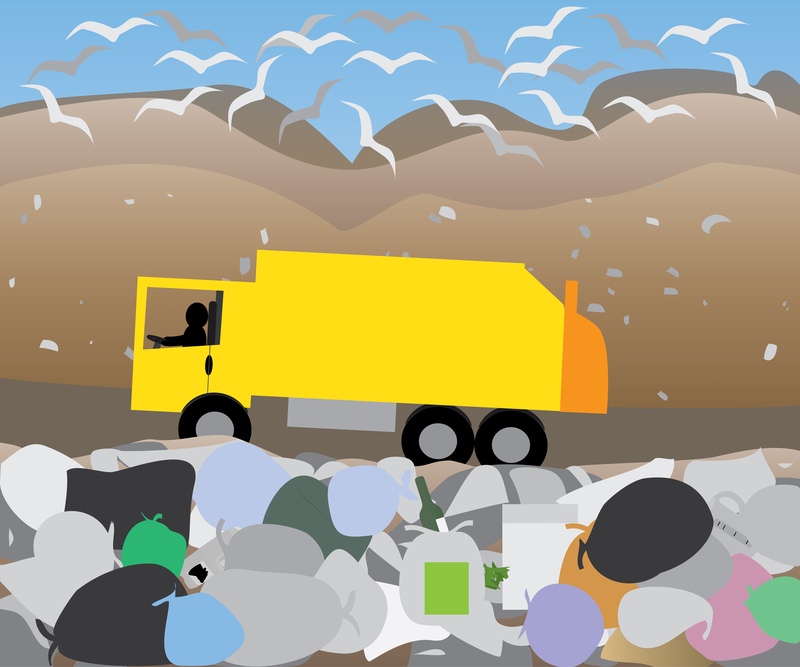How to Train Employees on Responsible PPE Waste Disposal
In today's workplace, the use of personal protective equipment (PPE) is vital to ensure employee health and safety. However, managing the disposal of PPE waste responsibly is equally crucial. Failing to dispose of used PPE properly not only harms the environment but also poses risks of contamination and workplace hazards. This comprehensive guide will detail effective methods for training employees on responsible PPE waste disposal, emphasizing best practices and compliance with relevant regulations.

Why Responsible PPE Waste Disposal Matters
As PPE use has increased across industries--from healthcare to construction--so too has PPE waste generation. Responsible PPE disposal ensures:
- Employee Safety: Reduces risk of contamination and exposure to hazardous materials.
- Environmental Protection: Prevents plastics, chemicals, and contaminants from polluting ecosystems.
- Regulatory Compliance: Meets local, national, and international waste management standards.
- Reputation Management: Demonstrates corporate responsibility to stakeholders and the community.
Understanding PPE Waste and Its Categories
Effective training begins with an understanding of what constitutes PPE waste and how it is categorized:
- Non-Hazardous PPE Waste: Includes items like dust masks, safety goggles, gloves, and face shields not contaminated with hazardous materials.
- Hazardous PPE Waste: Items contaminated with chemicals, biological agents, or toxic substances--such as chemical-resistant gloves, masks used in medical settings, or gowns with infectious materials.
Assessing Your Current PPE Waste Disposal Practices
Before implementing new training, audit your current processes with questions like:
- Are employees aware of how and where to dispose of used PPE?
- Are the correct disposal bins and signage provided at key locations?
- Is there a written policy or clear guidelines on PPE waste management?
- Are supervisors and safety officers actively monitoring disposal practices?
Key Elements of an Effective PPE Waste Disposal Training Program
A successful program must combine knowledge transfer, practical exercises, and ongoing evaluation. Here are the steps to develop an effective initiative:
1. Establish Clear Objectives and Policies
Define what responsible PPE waste disposal means for your organization. Policies should:
- Outline which types of PPE are used and their associated risks.
- Identify proper disposal methods for each type.
- Highlight employee and management responsibilities.
2. Develop a Comprehensive Training Curriculum
Integrate the following topics into your training materials:
- Overview of PPE Types: Masks, gloves, aprons, coveralls, face shields, etc.
- Risks of Improper Disposal: Environmental impacts, contamination risks, and legal consequences.
- Waste Segregation: How to separate hazardous from non-hazardous PPE waste.
- Disposal Procedures: Step-by-step guide on safe removal, containment, and drop-off at designated collection points.
- Recycling and Reusable PPE: Encourage the use of recyclable options where possible and how to handle reusable PPE safely.
3. Incorporate Interactive Training Methods
Adults learn best by doing. Interactive sessions could include:
- Hands-on Workshops: Demonstrations of correct PPE removal and disposal.
- Role-playing Scenarios: Handling hazardous spills or contaminated PPE incidents.
- Quizzes and Feedback: Test knowledge retention and encourage real-time questions.
4. Provide Accessible PPE Waste Disposal Resources
Support responsible disposal with:
- Labeled Disposal Bins: Color-coded and clearly labeled for different PPE types.
- Instructional Signage: Simple, bilingual (if needed), and located at high-traffic points.
- Easy Reporting Mechanisms: For issues like full bins, lack of supplies, or misplaced waste.
5. Foster a Culture of Responsibility and Accountability
Encourage all employees to take *ownership of their actions*. This can be achieved by:
- Recognizing teams or individuals who model proper PPE disposal habits.
- Incorporating PPE waste management into regular safety briefings.
- Empowering designated "PPE Champions" to offer peer guidance.
6. Measure Effectiveness and Provide Ongoing Training
Training should not be a *one-time event*. Continuously update and reinforce learning by:
- Conducting periodic proficiency checks.
- Reviewing incident reports for disposal-related issues.
- Offering refresher courses when PPE protocols or types change.
- Soliciting employee feedback for improvement.
Complying with PPE Waste Disposal Regulations
Responsible PPE waste disposal is governed by local, state, and federal laws. Key regulatory frameworks include:
- OSHA (Occupational Safety and Health Administration): Sets standards for workplace safety, including proper PPE waste handling.
- EPA (Environmental Protection Agency): Requires hazardous waste to be managed according to specific guidelines.
- State and Local Regulations: May specify unique requirements for medical, chemical, or other contaminated waste.
Best Practices for PPE Waste Segregation and Disposal
Ensure your training covers these foundational best practices:
- Never Mix Waste Streams: Keep hazardous PPE separate from regular trash and recycling.
- Use Approved Containers: Sharps bins, biohazard containers, or chemical-resistant bags as applicable.
- Seal and Label Waste Properly: Prevents leaks, accidents, and confusion during pickup or transportation.
- Minimize Contact: Always use gloves and avoid touching contaminated surfaces.
- Ensure Regular Waste Collection: Eliminate storage of used PPE onsite whenever possible.
Recycling and Reusing PPE Where Possible
With advances in PPE design, some components can be recycled or safely reused:
- Check manufacturer recommendations--certain eye and face protection devices are specifically designed for decontamination and repeated use.
- Follow robust cleaning and sterilization protocols for reusable PPE.
- Collaborate with specialist recycling providers for items like hard hats or safety eyewear where programs exist.
The Role of Supervisors in PPE Waste Disposal Training
Supervisors act as role models for PPE disposal. Train them to:
- Monitor compliance and proactively correct improper disposal.
- Lead by example, demonstrating responsible behaviors at all times.
- Provide timely feedback and support ongoing learning.
Practical Tips: Driving Engagement and Behavior Change
Shifting workplace culture is essential for long-term responsible PPE waste disposal. Use these strategies:
- Gamification: Reward teams for consistent compliance.
- Peer-to-peer learning: Encourage employees to share tips and remind each other.
- Visual Impact: Share data or photos showing the difference responsible disposal makes.
- Management Buy-In: Secure leadership support and visibility.
Case Study: PPE Waste Disposal Training in Action
ABC Manufacturing rolled out a new PPE waste management training program after noticing an increase in improperly disposed masks and gloves. They:
- Required all new hires to undergo PPE disposal training on day one.
- Deployed color-coded bins in every department with visual instructions.
- Named "PPE Ambassadors" on each shift to answer questions and oversee compliance.
- Monitored improvement using monthly internal audits.
Within three months, incidents of improper disposal dropped by 85% and the company received recognition for its sustainability efforts.
Overcoming Common Challenges in PPE Waste Disposal Training
- Lack of Awareness: Use visual reminders and regular communication to reinforce key messages.
- Language Barriers: Offer multilingual training sessions and translated materials.
- Changing PPE Guidelines: Stay connected with regulatory updates and adapt training accordingly.
- Employee Fatigue: Vary formats and keep sessions engaging to maintain interest.

Frequently Asked Questions About PPE Waste Disposal Training
How often should employees be trained on PPE waste disposal?
Training should occur at onboarding, with refresher sessions annually or whenever regulations or internal procedures change.
What are examples of PPE waste that require special handling?
Items contaminated with hazardous materials (e.g., blood, bodily fluids, chemicals) must be handled as hazardous waste, using appropriate containers and procedures.
Can PPE be recycled?
Some PPE items, such as face shields or certain types of goggles, are recyclable. Check with local waste management services and the equipment manufacturer for guidance.
What's the risk of improper PPE waste disposal?
Improper disposal can lead to environmental damage, workplace contamination, regulatory penalties, and public health risks.
Conclusion: The Importance of Training for Responsible PPE Waste Disposal
Investing in comprehensive PPE waste disposal training is not only a legal requirement but also a cornerstone of a safe, healthy, and environmentally responsible workplace. With clear policies, engaging instruction, accessible resources, and ongoing support, any organization can empower its employees to dispose of PPE responsibly and sustainably. Start building your program today to protect your people, your community, and the planet.